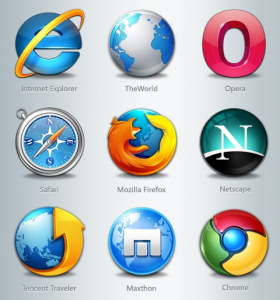4 Cross-Browser Testing Tools for Your Website

 Back then it was possible to ignore those using less orthodox browsers, like Opera; but today there is no clearly defined leader. That’s why cross-browser testing is such an important part of setting up a website – if you forgo it you will suffer high bounce rates, as a lot of visitors will be unable to view some content or navigate the site.
Back then it was possible to ignore those using less orthodox browsers, like Opera; but today there is no clearly defined leader. That’s why cross-browser testing is such an important part of setting up a website – if you forgo it you will suffer high bounce rates, as a lot of visitors will be unable to view some content or navigate the site.
And to do it right you need right tools.
1. Browserling
According to Magicdust, a Sydney web design company, Browserling is one of the most popular tools in this sphere, and it is clearly seen why: it does not simply allow you to see how your website looks in different browsers with different screen resolutions, but provides full-scale browsing sessions instead of static screenshot. In addition to that, Browserling is powered by HTML5, which means you don’t have to install anything to get it going. However, it comes at a price: free version only allows you access to Internet Explorer for 3 minutes at a time. To get full functionality you’ll have to pay $19 a month.
2. CrossBrowserTesting
The service with self-evident name CrossBrowserTesting is an excellent way to both get rich functionality and cut costs. Full version gives you access to more than a thousand combinations of OS, web browsers, their versions, plugins and modifications. Nobody says it isn’t pricey – subscriptions start at $29.95 per month and get as high as $199, but there is always a free trial version that allows you to test your site against about a hundred combinations for 60 minutes within a week – more than enough for a small business that is just getting started.
3. Browsershots
Another low-budget solution is Browsershots. Of course, it is less convenient and powerful than some of the alternatives, but it has its advantages, the strongest being that you are free to use it as much as you like.
It doesn’t provide full-fledged sessions with virtual browsers – instead it provides screenshots of your website made using different OS and browsers from a rather rich selection. Although lack of interaction limits its use, it still provides a pretty good picture of how your website is perceived by different browsers and devices.
Another interesting feature is web design ratings: service users can vote on website designs they like, which can help you in deciding whether the public is going to like that new look of your front page.
4. BrowserStack
The main selling point of BrowserStack is that opens websites not in simulators, but in real browsers, providing a very decent choice of them – more than 700 combinations according to their claims. There are automatic tests supporting a number of programming languages, and Responsive Design Testing feature allowing you to dynamically check the site against a number of mobile device views. However, it is even costlier than CrossBrowserTesting, starting at $39 per month.
Cross-browser testing is an absolute must for any business that is serious about establishing online presence. Don’t ignore the possibilities it opens up.
[image error]



